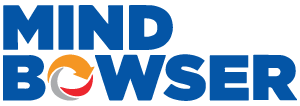Complex Chronic Care Management (CPT 99487/99489) allows providers to bill for patients requiring higher-level decision-making and extended care coordination time. With reimbursements up to $131.65 for 99487 and $70.52 for 99489, organizations can unlock incremental revenue while improving compliance and patient outcomes. Success hinges on precise documentation, workflow redesign, and audit-ready processes.
For hospitals and digital health companies, chronic care management has shifted from a nice-to-have revenue stream to a strategic lever in value-based care. Standard CCM codes have helped organizations capture revenue for basic coordination; however, they do not always accurately reflect the true clinical and administrative effort required to manage patients with complex needs.
This is where complex CCM, billed under CPT 99487 and 99489, enters the equation. These codes recognize not just the time invested in care coordination but the complexity of medical decision-making required to keep high-risk patients stable and engaged. In 2025, as CMS expands reimbursement and tightens compliance scrutiny, mastering these codes is no longer optional. It is a necessity for hospitals aiming to reduce readmissions, for startups scaling care platforms, and for CFOs under pressure to prove ROI.
At Mindbowser, we have seen firsthand how technology-enabled workflows and automation accelerators can make the difference between leaving revenue on the table and building a scalable, compliant CCM program. Complex CCM is both an economic opportunity and a clinical imperative, provided organizations have the right infrastructure in place.
Complex Chronic Care Management is distinct from standard CCM in both scope and reimbursement.
Related read: CCM Billing 2025: Codes, APCM & ROI
While standard CCM (CPT 99490) recognizes care coordination efforts of at least 20 minutes, complex CCM acknowledges the deeper clinical investment required.
Related read: How Much Does Medicare Pay for Chronic Care Management in 2025
The shift from time-based reimbursement to complexity-based reimbursement is a key policy signal.
Complex CCM codes demand a higher level of rigor compared to standard CCM. Providers cannot rely on time logs alone; they must prove both the minutes spent and the complexity of decision-making.
Because CMS scrutiny is high, audit-ready documentation is non-negotiable. Organizations that lack structured workflows often fail audits and risk recoupments.
CMS has consistently flagged CCM billing as an area of compliance risk. In 2025, this risk is heightened with the rollout of APCM codes and the emphasis on complexity.
Related read: CCM Compliance Automation: Why Hospitals and Startups Can No Longer Rely on Manual Workflows
Complex CCM reimbursement is designed to reflect the higher level of work involved. For hospitals and digital health providers, the financial uplift can be substantial when compared with standard CCM.
Case studies from partners demonstrate how technology and workflow optimization convert complex CCM into measurable financial and clinical returns.
One health system unified EHR, claims, labs, and social data within a care optimization suite. The program reduced readmissions by 52% and lowered Medicaid plan costs by 12.1%. This shows how precise CCM execution can generate savings that extend well beyond reimbursement.
Another provider implemented an AI-native health record platform that automated intake, documentation, and follow-ups. Results included a 70% reduction in documentation time, 60% faster follow-up, and 50% more patient interaction. These workflow efficiencies directly improved compliance with CPT 99487 and 99489 while expanding the number of billable encounters.
A third organization connected wearable and lab data with AI-driven summarization tools. This reduced physician review time by 60% and increased patient interaction by 45%. The approach enabled care teams to maintain accurate and complex CCM documentation without increasing clinician workload or burnout.
These examples illustrate how clinical outcomes and financial impact align when complex CCM is supported by strong technology and operational design.
Financial opportunity comes with operational requirements. Hospitals and startups must address staffing, workflow, and compliance capacity before scaling complex CCM.
Operational success in complex CCM depends on aligning reimbursement potential with staffing models and compliance infrastructure. Without automation and integration, organizations risk revenue leakage or audit exposure.
From documentation automation to EHR integration, Mindbowser helps you scale complex CCM with confidence and measurable ROI.
A successful complex CCM program requires more than adding codes to the billing system. Providers must re-engineer their workflows to consistently capture both time and complexity.
Technology is the backbone of scaling complex CCM. Without automation, most organizations cannot meet documentation and compliance requirements at scale.
Even with redesigned workflows and advanced technology, quality assurance is essential to avoid denials and withstand audits. A QA checklist should be reviewed monthly by compliance leads.
By following this roadmap, hospitals and digital health companies can operationalize complex CCM codes in a way that maximizes reimbursement, reduces compliance risk, and improves patient outcomes.
Mindbowser works with hospitals and digital health companies to design CCM platforms that are built for scale. Instead of retrofitting legacy systems, we develop API-first solutions that allow organizations to integrate care coordination, documentation, and billing directly into their existing workflows.
Compliance is no longer optional in complex CCM. The higher reimbursement rates make these codes attractive, but they also increase the risk of audits and clawbacks. Mindbowser’s automation tools reduce that risk while enhancing ROI.

Complex Chronic Care Management, billed under CPT 99487 and 99489, acknowledges the deeper clinical and administrative work required to manage high-risk patients. By tying reimbursement to both time and decision-making complexity, these codes create a path for providers to capture revenue that aligns more closely with the actual effort invested in patient care.
For hospitals and digital health companies, the financial opportunity is significant. Standard CCM offers a baseline, but complex CCM can double or even triple reimbursement potential, creating sustainable funding for expanded care teams. At the same time, compliance expectations are higher, requiring structured care plans, time tracking, and audit-ready documentation supported by automation and EHR integration.
The future of chronic care is moving toward models like APCM, where complexity drives reimbursement and ROI is measured through reduced readmissions and improved outcomes. Organizations that act now to implement compliant, technology-enabled complex CCM workflows will not only strengthen revenue streams but also position themselves as leaders in value-based care. Mindbowser provides the platforms, integrations, and automation that make this transition both achievable and profitable.
Complex Chronic Care Management (CCM) refers to the ongoing coordination of care for patients with two or more chronic conditions that pose significant health risks. CPT codes 99487 and 99489 are used to bill for this service when care involves moderate-to-high complexity medical decision-making and at least 60 minutes of clinical staff time per month, under physician supervision.
The main differences lie in time requirements and decision-making complexity:
Standard CCM (99490) covers 20 minutes of staff time and routine coordination.
Complex CCM (99487) covers 60 minutes and requires moderate-to-high medical decision-making.
Add-on code (99489) covers each additional 30 minutes.
Complex CCM acknowledges the deeper clinical effort needed for high-acuity patients and offers higher reimbursement.
As of 2025, Medicare reimburses approximately:
$131.65 for CPT 99487 (base code for 60 minutes).
$70.52 for CPT 99489 (each additional 30 minutes).
This represents more than double the rate of standard CCM, creating a significant financial opportunity for hospitals and digital health organizations managing complex patients.
To bill 99487 or 99489, providers must document both time spent and decision-making complexity. Required records include:
A comprehensive care plan with diagnoses, goals, and interventions.
Time logs proving 60+ minutes of clinical coordination.
Notes showing moderate-to-high medical decision-making.
Communication records and audit-ready documentation.
Tools like AI Medical Summary and CarePlan AI can automate this process for accuracy and compliance.
Mindbowser builds FHIR-native, API-first CCM platforms tailored for CPT 99487/99489. Our solutions:
Automate documentation and audit packet creation.
Integrate with major EHRs like Epic, Cerner, and Athenahealth.
Use AI-powered workflows (CarePlan AI, AI Medical Summary) to reduce manual work.
Deliver real-time ROI dashboards to track revenue and compliance.
This helps hospitals and digital health companies scale CCM programs that are profitable, compliant, and audit-ready.

We worked with Mindbowser on a design sprint, and their team did an awesome job. They really helped us shape the look and feel of our web app and gave us a clean, thoughtful design that our build team could...


The team at Mindbowser was highly professional, patient, and collaborative throughout our engagement. They struck the right balance between offering guidance and taking direction, which made the development process smooth. Although our project wasn’t related to healthcare, we clearly benefited...

Founder, Texas Ranch Security

Mindbowser played a crucial role in helping us bring everything together into a unified, cohesive product. Their commitment to industry-standard coding practices made an enormous difference, allowing developers to seamlessly transition in and out of the project without any confusion....

CEO, MarketsAI

I'm thrilled to be partnering with Mindbowser on our journey with TravelRite. The collaboration has been exceptional, and I’m truly grateful for the dedication and expertise the team has brought to the development process. Their commitment to our mission is...

Founder & CEO, TravelRite

The Mindbowser team's professionalism consistently impressed me. Their commitment to quality shone through in every aspect of the project. They truly went the extra mile, ensuring they understood our needs perfectly and were always willing to invest the time to...

CTO, New Day Therapeutics

I collaborated with Mindbowser for several years on a complex SaaS platform project. They took over a partially completed project and successfully transformed it into a fully functional and robust platform. Throughout the entire process, the quality of their work...

President, E.B. Carlson

Mindbowser and team are professional, talented and very responsive. They got us through a challenging situation with our IOT product successfully. They will be our go to dev team going forward.

Founder, Cascada

Amazing team to work with. Very responsive and very skilled in both front and backend engineering. Looking forward to our next project together.

Co-Founder, Emerge

The team is great to work with. Very professional, on task, and efficient.

Founder, PeriopMD

I can not express enough how pleased we are with the whole team. From the first call and meeting, they took our vision and ran with it. Communication was easy and everyone was flexible to our schedule. I’m excited to...

Founder, Seeke

We had very close go live timeline and Mindbowser team got us live a month before.

CEO, BuyNow WorldWide

Mindbowser brought in a team of skilled developers who were easy to work with and deeply committed to the project. If you're looking for reliable, high-quality development support, I’d absolutely recommend them.

Founder, Teach Reach

Mindbowser built both iOS and Android apps for Mindworks, that have stood the test of time. 5 years later they still function quite beautifully. Their team always met their objectives and I'm very happy with the end result. Thank you!

Founder, Mindworks

Mindbowser has delivered a much better quality product than our previous tech vendors. Our product is stable and passed Well Architected Framework Review from AWS.

CEO, PurpleAnt

I am happy to share that we got USD 10k in cloud credits courtesy of our friends at Mindbowser. Thank you Pravin and Ayush, this means a lot to us.

CTO, Shortlist

Mindbowser is one of the reasons that our app is successful. These guys have been a great team.

Founder & CEO, MangoMirror

Kudos for all your hard work and diligence on the Telehealth platform project. You made it possible.

CEO, ThriveHealth

Mindbowser helped us build an awesome iOS app to bring balance to people’s lives.

CEO, SMILINGMIND

They were a very responsive team! Extremely easy to communicate and work with!

Founder & CEO, TotTech

We’ve had very little-to-no hiccups at all—it’s been a really pleasurable experience.

Co-Founder, TEAM8s

Mindbowser was very helpful with explaining the development process and started quickly on the project.

Executive Director of Product Development, Innovation Lab

The greatest benefit we got from Mindbowser is the expertise. Their team has developed apps in all different industries with all types of social proofs.

Co-Founder, Vesica

Mindbowser is professional, efficient and thorough.

Consultant, XPRIZE

Very committed, they create beautiful apps and are very benevolent. They have brilliant Ideas.

Founder, S.T.A.R.S of Wellness

Mindbowser was great; they listened to us a lot and helped us hone in on the actual idea of the app. They had put together fantastic wireframes for us.

Co-Founder, Flat Earth

Mindbowser was incredibly responsive and understood exactly what I needed. They matched me with the perfect team member who not only grasped my vision but executed it flawlessly. The entire experience felt collaborative, efficient, and truly aligned with my goals.

Founder, Child Life On Call

The team from Mindbowser stayed on task, asked the right questions, and completed the required tasks in a timely fashion! Strong work team!

CEO, SDOH2Health LLC

Mindbowser was easy to work with and hit the ground running, immediately feeling like part of our team.

CEO, Stealth Startup

Mindbowser was an excellent partner in developing my fitness app. They were patient, attentive, & understood my business needs. The end product exceeded my expectations. Thrilled to share it globally.

Owner, Phalanx

Mindbowser's expertise in tech, process & mobile development made them our choice for our app. The team was dedicated to the process & delivered high-quality features on time. They also gave valuable industry advice. Highly recommend them for app development...

Co-Founder, Fox&Fork
